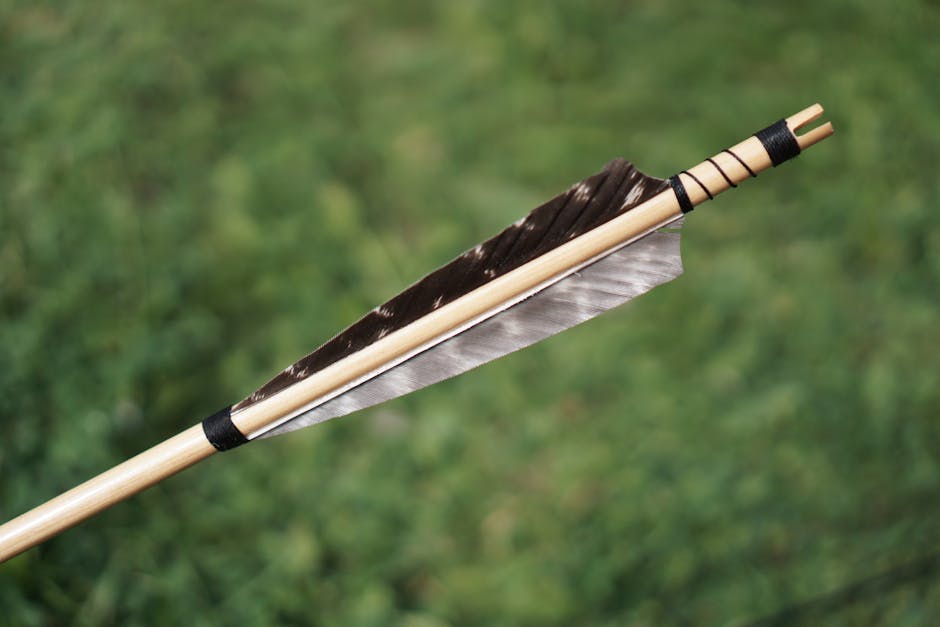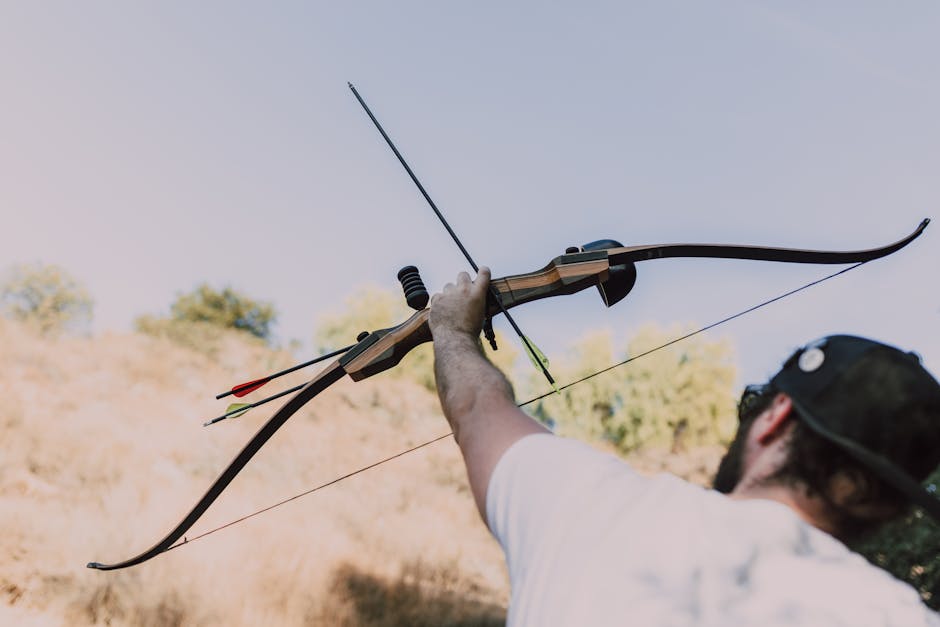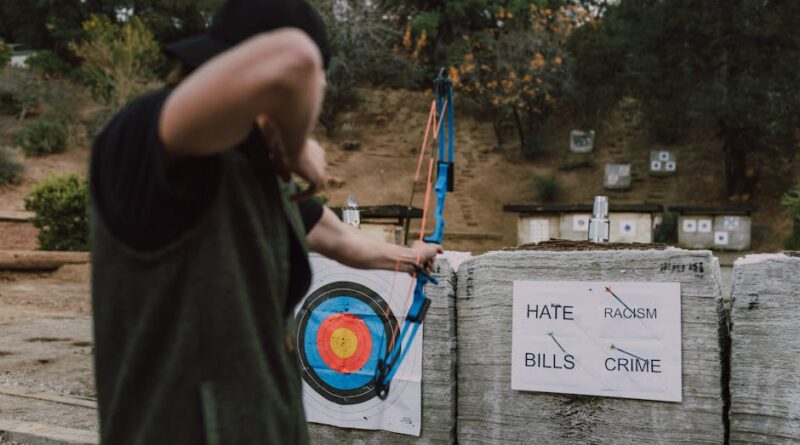Upholding Ethics in Archery-Based Hunting
When we think of hunting, we often conjure up images of skilled archers silently stalking their prey through the dense forests, embodying a primal connection to nature. Archery-based hunting, with its rich history and deep-rooted traditions, has been a part of human culture for thousands of years. However, as with any activity involving the taking of animal lives, ethics play a crucial role in shaping the way we engage with this ancient practice.
As modern archery equipment continues to evolve, providing hunters with more precision and power than ever before, the need to uphold ethical standards in archery-based hunting becomes increasingly important. In this article, we will delve into the complex and nuanced world of ethical archery-based hunting, exploring the key principles, controversies, and considerations that every hunter should be aware of.
The Importance of Ethical Hunting

Before we dive into the specific ethical considerations of archery-based hunting, it is essential to understand why ethical hunting practices are crucial. Ethical hunting goes beyond legal compliance; it encompasses a set of moral guidelines that strive to ensure that animals are harvested humanely and sustainably, while also respecting the environment and wildlife populations.
One of the primary reasons for upholding ethical standards in hunting is to minimize animal suffering. Archery-based hunting, in particular, requires a high level of skill and precision to ensure a quick and clean kill. A poorly placed shot can result in prolonged suffering for the animal, which goes against the fundamental principles of ethical hunting.
Furthermore, ethical hunting practices help maintain healthy wildlife populations and preserve the balance of ecosystems. By adhering to regulations and guidelines set by wildlife management authorities, hunters can contribute to conservation efforts and ensure that future generations will have the opportunity to enjoy the natural world as we do today.
Lastly, ethical hunting promotes a deeper connection to nature and fosters a sense of respect and appreciation for the animals we hunt. By approaching hunting with a mindset of stewardship and reverence for the natural world, hunters can cultivate a more profound understanding of their role in the ecosystem and the impact of their actions.
The Ethics of Fair Chase

Central to ethical hunting is the concept of fair chase, which emphasizes the pursuit of game in a manner that gives the animal a reasonable chance of escape. Fair chase hunting is rooted in the idea of sportsmanship and respect for the quarry, as well as the recognition of the inherent challenge and skill involved in hunting.
In archery-based hunting, fair chase ethics are particularly important due to the close-range nature of the sport. Unlike firearms, which allow for greater distance between the hunter and the target, archery requires hunters to get within close proximity of the animal, increasing the level of skill and precision needed to make a successful shot.
Adhering to fair chase principles means that hunters must refrain from using artificial aids or techniques that give them an unfair advantage over the game. This includes practices such as baiting, spotlighting, or using high-tech gadgets that diminish the animal’s ability to detect and evade the hunter. By embracing fair chase ethics, archery hunters can ensure a more ethical and fulfilling hunting experience.
Shot Placement and Humane Harvest

One of the most critical aspects of ethical archery-based hunting is shot placement. The ability to consistently hit vital organs and make clean, ethical kills is a fundamental skill that every archery hunter must master. Proper shot placement not only ensures a quick and humane harvest but also minimizes the risk of wounding and losing game.
When aiming at a game animal, archery hunters must strive to target vital organs such as the heart and lungs to achieve a swift and clean kill. This requires a deep understanding of animal anatomy, as well as the ability to accurately assess distance, angle, and shot placement under varying conditions.
Many ethical hunting organizations recommend specific shot angles and placement guidelines to help hunters make ethical and effective shots. For example, the “quartering away” shot, where the animal is facing away from the hunter, offers a clear path to the vitals and is considered a high-percentage shot for archery hunters.
By honing their marksmanship skills and practicing ethical shot placement, archery hunters can ensure that their harvests are not only successful but also carried out with the utmost respect for the animal’s welfare.
Sustainable Harvest and Wildlife Management

Another critical aspect of ethical archery-based hunting is the principle of sustainable harvest and wildlife management. Sustainable hunting practices aim to ensure that hunting activities do not negatively impact wildlife populations or their habitats, allowing for the long-term conservation of species and ecosystems.
Wildlife management authorities, such as state wildlife agencies and conservation organizations, play a vital role in regulating hunting seasons, bag limits, and other regulations to promote sustainable harvest practices. By following these guidelines and participating in data collection efforts, archery hunters can contribute to the conservation and management of game species.
In addition to following regulations, ethical hunters also engage in habitat conservation and restoration efforts to benefit wildlife populations. By supporting initiatives such as habitat improvement projects, invasive species control, and land conservation, archery hunters can help create healthier ecosystems and ensure the continued existence of game species for future generations.
Ultimately, sustainable harvest and wildlife management are key components of ethical archery-based hunting, reflecting a commitment to responsible stewardship of the land and its inhabitants.
Respect for the Animal and the Environment
Respect for the animal and the environment is a core value of ethical hunting, emphasizing the importance of treating wildlife with dignity and reverence. In archery-based hunting, this respect extends to the way hunters interact with their surroundings and the animals they pursue.
One aspect of respecting the animal involves making every effort to utilize the harvested game to its fullest extent. Ethical hunters strive to minimize waste by salvaging meat, hides, antlers, and other parts of the animal for food, clothing, or other purposes. This practice not only honors the animal’s sacrifice but also reflects a deeper appreciation for the resources provided by the natural world.
Environmental stewardship is another essential component of ethical archery-based hunting, emphasizing the need to minimize one’s impact on the ecosystem and reduce the carbon footprint of hunting activities. By practicing leave-no-trace principles, such as proper waste disposal, tread-lightly techniques, and responsible land use, hunters can help preserve the beauty and integrity of the natural landscape.
Lastly, respect for the animal and the environment also involves cultivating a mindful and reverent mindset while in the field. Taking time to observe and appreciate the sights, sounds, and rhythms of nature can deepen one’s connection to the wilderness and foster a sense of humility and gratitude for the bounty it provides.
Ethical Considerations in Trophy Hunting
One of the most contentious issues in the hunting community is the practice of trophy hunting, where hunters target animals primarily for their horns, antlers, or other physical attributes rather than for sustenance. Trophy hunting raises ethical concerns regarding the treatment of wildlife, the conservation of species, and the perception of hunting in the broader public eye.
In archery-based hunting, ethical considerations around trophy hunting are particularly relevant due to the skill and challenge involved in harvesting large game animals. While some hunters may seek trophy animals as a personal challenge or to commemorate a significant hunting achievement, others view trophy hunting as a morally questionable practice that prioritizes ego and status over ethical considerations.
When engaging in trophy hunting, ethical archery hunters must carefully consider the impact of their actions on wildlife populations and ecosystems. Responsible trophy hunting practices involve selecting mature animals past their prime breeding age, ensuring that the overall health and genetic diversity of the population are not compromised.
Additionally, ethical archery hunters should be transparent about their motivations for trophy hunting and actively participate in conservation efforts to offset the potential negative consequences of targeting trophy animals. By approaching trophy hunting with a mindset of respect, conservation, and ethical responsibility, archery hunters can navigate the complexities of this controversial practice with integrity and mindfulness.
Fostering a Culture of Ethical Hunting
As the popularity of archery-based hunting continues to grow, it is essential for hunters to uphold ethical standards and promote a culture of responsible and sustainable hunting practices. By leading by example, educating others, and advocating for ethical hunting principles, archery hunters can help shape the future of hunting and ensure that this time-honored tradition thrives for generations to come.
One way to foster a culture of ethical hunting is through mentorship and guidance, especially for new and inexperienced hunters. By sharing knowledge, skills, and ethical values with novice hunters, experienced archery hunters can instill a sense of stewardship and respect for the natural world from the outset, laying the foundation for a lifetime of ethical hunting practices.
Community involvement and collaboration are also essential for promoting ethical hunting within the archery community. By participating in conservation projects, wildlife management initiatives, and hunting education programs, archery hunters can build strong relationships with like-minded individuals and organizations, creating a network of support and advocacy for ethical hunting practices.
Ultimately, the collective efforts of individual hunters, hunting organizations, and wildlife management authorities are crucial for upholding ethics in archery-based hunting and ensuring the long-term sustainability of this cherished tradition.
Conclusion
Upholding ethics in archery-based hunting is not just a legal obligation; it is a moral imperative that reflects our respect for wildlife, the environment, and the timeless traditions of hunting. By embracing fair chase principles, practicing humane shot placement, supporting sustainable harvest practices, and fostering a culture of ethical hunting, archery hunters can contribute to the conservation of wildlife and the preservation of our natural heritage.
As we navigate the complexities of modern hunting practices and the evolving landscape of conservation, it is essential to remember that ethical hunting is not just a set of rules to follow but a way of life to embody. By approaching each hunting experience with mindfulness, reverence, and a commitment to ethical principles, archery hunters can honor the legacy of our hunting ancestors and ensure that the spirit of the hunt endures for generations to come.




